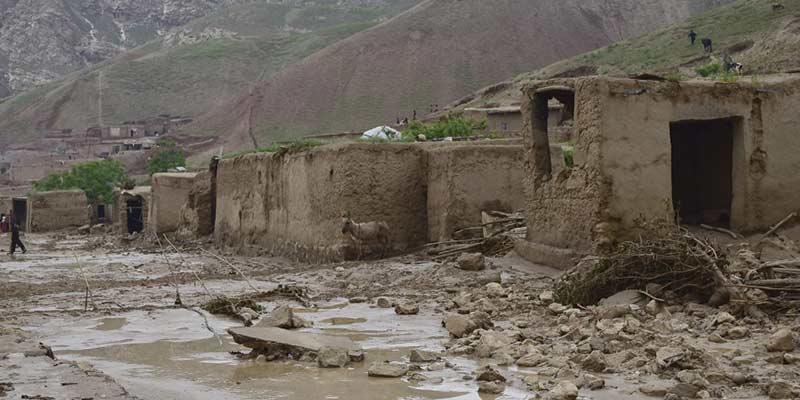- World
- May 13
Explainer - What are flash floods?
• Flash floods caused by heavy rains have devastated villages in northern Afghanistan, killing 315 people and injuring more than 1,600.
• UN humanitarian teams scrambled to get lifesaving aid to communities devastated by deadly flash floods in northeastern Afghanistan.
• Most of the casualties were reported in Baghlan province, where heavy rains destroyed an estimated 3,000 houses, flooded farmlands, washed away livestock, and damaged health centres, according to UN agencies.
• Takhar and Badakhshan provinces were also impacted with initial reports of at least 300 houses damaged.
Flooding
• A flood is any overflow of water onto land that is normally dry.
Major causes of floods include:
i) Water rising beyond the normal limits of a watercourse causing riverine flooding.
ii) Changes in ocean level causing coastal flooding.
iii) Extremely heavy rain causing flash flooding (commonly in urban areas).
• Floods are the most common and widespread of all weather-related natural disasters.
• Floods can happen during heavy rains, when ocean waves come on shore, when snow melts quickly, or when dams or levees break.
• Floods can occur within minutes or over a long period, and may last days, weeks, or longer.
• Flooding kills more people than just about any weather-related hazard. Most deaths associated with floods occur either at night, or when people become trapped in areas that are flooded.
Types of Floods
• Flash Floods: Floods occurring within six hours, mainly due to heavy rainfall associated with towering cumulus clouds, thunderstorms, tropical cyclones or during passage of cold weather fronts, or by dam failure or other river obstruction. This type of flood requires a rapid localised warning system. Flash floods occur due to high rate of water flow as also due to poor permeability of the soil. Areas with hardpan just below the surface of the soil are more prone to floods as water fails to seep down to the deeper layers. The construction of buildings, highways, driveways, and parking lots increases runoff by reducing the amount of rain absorbed by the ground. This runoff increases the flash flood potential. During heavy rain, the storm drains can become overwhelmed or plugged by debris and flood the roads and buildings nearby. Low spots, such as underpasses, underground parking garages, basements, and low water crossings can become death traps.
• River Floods: Floods caused by precipitation over a large catchment’s area, melting of snow or both. Built up slowly or on a regular basis, these floods may continue for days or weeks. The major factors of these floods are moisture, vegetation cover, depth of snow, size of the catchment’s basin, etc.
• Coastal Floods: Floods associated with cyclonic activities like hurricanes, tropical cyclones, etc generating a catastrophic flood from rainwater which often aggravate wind-induced storm and water surges along the coast.
• Urban Flood: As land is converted from agricultural fields or woodlands to roads and parking lots, it loses its ability to absorb rainfall. Urbanisation decreases the ability to absorb water two to six times over what would occur on natural terrain. During periods of urban flooding, streets can become swift moving rivers, while basements can become death traps as they fill with water.
• Ice Jam: Floating ice can accumulate at a natural or human-made obstruction and stop the flow of water thereby causing floods.
• Glacial Lake Outbursts Flood (GLOF): Many of the big glaciers which have melted rapidly and gave birth to the origin of a large number of glacier lakes. Due to the faster rate of ice and snow melting, possibly caused by global warming, the accumulation of water in these lakes has been increasing rapidly resulting in sudden discharge of large volumes of water and debris and causing flooding in the downstream.
Additional read:
What are the main reasons for increase in floods in India?
Over 17,000 people died in floods and heavy rains between 2012 and 2021 in the country, Minister of State for Jal Shakti Bishweswar Tudu said in Rajya Sabha on July 31. The minister said the increased incidence of high intensity rainfall of short duration is mainly responsible for urban floods, which is further compounded by unplanned growth, encroachment of natural water bodies and poor drainage system.
Manorama Yearbook app is now available on Google Play Store and iOS App Store

